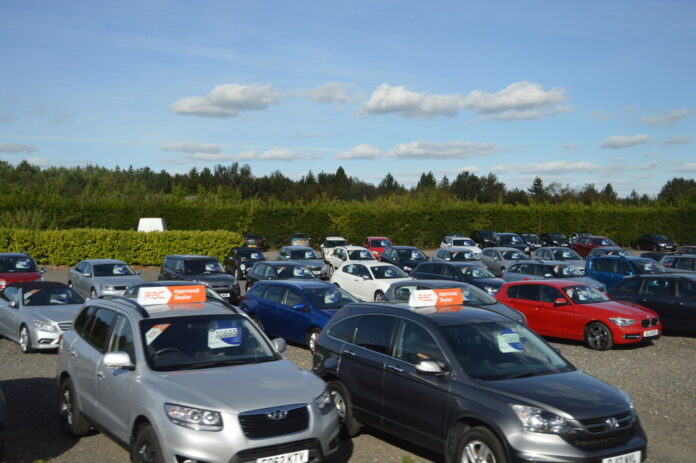Around 2 in 3 (63%) UK drivers have seen their motoring costs increase over the past 12 months
Rising costs could force drivers off the road, new data reveals
- With motoring costs becoming increasingly concerning, some drivers could be making dangerous decisions to keep costs down. That’s as 1 in 6 (16%) have skipped a service or MOT to avoid spending money.
- New research finds that 1 in 5 (18%) drivers have considered selling their car in the past year. And 1 in 3 (32%) of those said they wanted another which was cheaper to run.
- It might come as no surprise that motoring costs are more difficult to manage in recent years. That’s as the latest data by Confused.com reveals how car insurance prices reached record-breaking levels at the end of 2023. The average price is now £995 [1] for UK drivers.
- To get the full picture, Confused.com looks at how the cost of driving has changed over time. They’ve investigated how much MOTs, road tax, fuel, congestion charges and councils revenues are also pushing motoring costs up.
- Although some costs might be unavoidable, there are still areas where drivers could save. Louise Thomas, motor expert at Confused.com shares advice on where drivers might be able to reduce their motoring costs.
Around 2 in 3 (63%) drivers have seen their motoring costs increase over the past 12 months. And as motoring costs continue to rise, there’s a risk of drivers being priced off the road altogether, new data reveals.
According to new data gathered by Confused.com of 2,000 UK motorists, it seems that rising costs could be steering drivers to cut corners. That’s as 1 in 6 (16%) admit to skipping a service in between MOTs to avoid extra costs. This could impact the safety of other road users, especially if cars are older and require regular attention. And for some, skipping their annual service could also invalidate their insurance. So if they ever needed to make a claim, drivers could risk fines and points on their licence. In turn, this could have a knock on effect on car insurance costs the following year, too.
And for those who don’t tempt fate, it seems that price increases have led them to consider alternative options too. That’s as 1 in 5 (18%) have thought about selling their car over the past 12 months. One in 3 (32%) of those said it was because they needed something cheaper to run. Another 1 in 4 (24%) said repairing their car was costing more than what it was worth, and 1 in 5 (18%) want to spend their money on other outgoings.
It might come as no surprise that motoring costs are on the up for millions across the UK. According to Confused.com’s latest car insurance price index (Q4 2023), the cost of car insurance has reached record-breaking levels. Drivers are now paying more than ever, with the average price of car insurance currently at £995 per year[1].
Reasons for significant price increases include repairs costing insurers more than before in the event of a claim. That’s as parts and labour costs are all impacted by rising inflation. Second-hand cars are also holding their value for longer, costing the insurer more to repair or replace. And newer vehicles are now generally equipped with advanced technology or built with expensive parts. This is all having a knock-on effect with how much insurers are having to pay out, meaning costs are being passed back on to drivers.
But the challenges don’t end there. Confused.com also gathered further research from ONS records and requested data from police forces and councils through Freedom of Information requests. And to outline the findings, Confused.com has launched their cost of driving report on how the cost of driving has changed over time.
Research found that MOT costs had increased by 19% in recent years. The cost of a full service and MOT had risen from £184 to £219, on average, between 2018 and 2023.[2]
And while road tax has been a long standing cost for drivers, prices have also been climbing each year too. The latest Government figures show how road tax reached a total of £7.1 billion in 2021/22, a £400 million increase on the previous year[3]. Road tax usually increases each year to keep in line with the current inflation rate, but some drivers are better off than others. That’s as drivers with more polluting vehicles, such as diesel engines, continue to face some of the highest prices.
When it comes to fuel, prices have also been volatile for the last few years. Confused.com data shows how fuel cost drivers around £5.76 billion in 2022.[4] In 2022, the average price of fuel was 175.34p per litre in comparison to 119.1p per litre in 2021. That’s a 47% increase in just 12 months. And it’s clear that the increases have affected drivers. That’s as more than 1 in 3 (31%) avoid driving as much as they can to reduce fuel costs.
Although congestion charges don’t impact all drivers, Ultra Low Emission Zones (ULEZ) and Clean Air Zones (CAZ) are on the rise in different cities around the UK. This means more are struggling to afford their cars in cities like London and Birmingham. The most recent data from 2021/2022 shows £717 million was paid to councils for the use of congestion areas, such as CAZ and ULEZ areas.[5] But some drivers would rather the extra journey time than pay. That’s as almost 1 in 5 (17%) admit they avoid driving into congestion zones because of the charges.
But it’s not just congestion zones where councils collect money from drivers. The research also reveals that councils in the UK charged drivers £1.24 billion in the year 2021/22[6]. This included payments for parking fees, permits, toll bridge costs and penalty fees.
So where does that leave motoring costs in future? There’s already evidence to suggest that drivers can expect further increases in 2024. That’s as road taxes are set to increase once again from the beginning of April. And in Scotland, 3 cities will also begin charging drivers to enter its ULEZ areas. Drivers in Wales have also seen their new 20mph zones become enforceable. This means they could risk penalty fines and points on their licence if they’re caught exceeding the limit. So it’s important for drivers to be aware of the latest driving laws and how they may financially impact them over the next 12 months.
Although the annual increases could be worrying for millions of drivers, there are still ways to save on motoring costs. Louise Thomas, motor expert at Confused.com car insurance comments:
“With driving costs at an all-time high, millions of drivers could risk being priced off the road. That’s as our latest research found that more than half (63%) of drivers have seen their motoring costs increase in the past year.
“Driving is a necessity and lifeline for many, and while there are alternatives, such as using public transport, it’s not always an option. Especially if you live near unreliable transport links or far from day-to-day amenities.
“Although some motoring costs are hard to avoid, the good news is that there are still ways to save money so that you don’t have to sell your car. You can try things like:
- Using a price comparison site when buying car insurance – Be accurate with your details and never accept your auto-renewal quote without shopping around first.
- Getting multiple quotes before taking your car for a MOT or service – getting prices from different garages ensures you’re not paying more than you need to.
- Using a petrol prices tool – this can help you find the cheapest fuel stations in your area
- Avoiding congestion zones – If you can, using alternative routes could make commuting cheaper. But you may need to factor in extra journey time.
- Familiarising yourself with the latest driving laws – This can help you to budget for any upcoming expenses, such as road tax. And it can help you to avoid unwanted fines from any Highway Code changes you aren’t aware of.
“With new driving laws set for 2024, drivers could be paying for more fines, on top of their current driving expenses. But doing your research and being savvy could help to keep costs down. And that means any money you save could go towards other financial commitments.”

| [donate]
| Help keep news FREE for our readersSupporting your local community newspaper/online news outlet is crucial now more than ever. If you believe in independent journalism,then consider making a valuable contribution by making a one-time or monthly donation. We operate in rural areas where providing unbiased news can be challenging. |


















